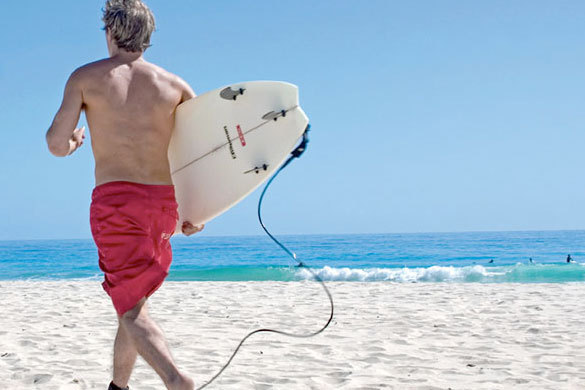
Bodysurfers are much more likely to suffer neck injuries than surfers, a leading Gold Coast Health neurosurgeon says.
Dr Teresa Withers said Gold Coast's waves were a big drawcard for residents and visitors alike, but the unfortunate reality was the ocean had a hidden power that could change people’s lives.
There are certain times of the year that we see an increase in these types of injuries (cervical spine region, neck pain).
“These include when big swells are rolling in and holiday periods when there are more tourists and inexperienced swimmers in the water,” Dr Withers said.
“I find it interesting that a lot of people focus on the risk of shark attacks when they are more likely to be injured much closer to shore.”
Dr Withers attended the Royal Australasian College of Surgeons Annual Scientific Congress in Brisbane where colleague Dr Elena How presented a research paper comparing injuries sustained by bodysurfing patients to those suffered by surfboard riders.
“This review aims to demonstrate that patients bodysurfing present with very different injuries compared to surfboard injuries, especially injuries involving the cervical spine (Câ€spine) region,” Dr How told the conference.
“A retrospective review of data collected on Gold Coast University Hospital from December 2010 to December 2015 has found there were a total of 1526 presentations of patients injured while surfing using a surfboard and 516 patients injured while bodysurfing and dumped.
“The most common injuries from surfboarding are lacerations to the face and head (319), followed by injuries to the lower limbs (143 sprains, 125 lacerations and 69 fractures).
“There were 82 complaints of neck pain, of which 13 had Câ€spine fractures,” Dr How said.
For bodysurfing, the most common presentation was neck pain (157); there were 27 Cspine fractures and four cord injuries without Câ€spine fracture.
The second most common injuries were in the upper limbs (153), of which 47 per cent were shoulder dislocations and 34 per cent were sprains.
Zero point nine per cent of surfboarders presented with thoracolumbar fractures, compared to 2.1% of bodysurfers.
“What this review found was that surfing has a unique spectrum of injuries depending on how it is done.
“The odds of presenting with a neck injury from bodysurfing are 7.9 times more likely than surfboarding so it would be a very good idea if the local authorities started providing some relevant educational information for visitors to the
Gold Coast, especially those who were going to get out on the waves,” Dr How said.
Dr How’s research featured in a Brisbane Times article.



